Log gazebos: advantages and disadvantages
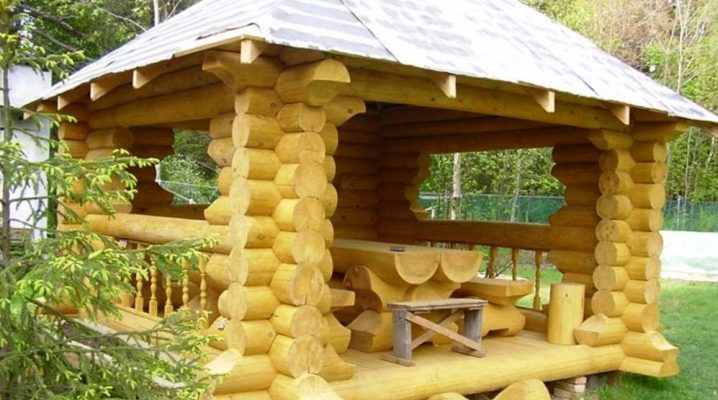
Natural wood is rightfully recognized as an eternal material that will never go out of fashion and will not cease to be desired. A variety of items are made from such raw materials, from furniture to fences and decorative elements. Today we will talk about cozy log gazebos and get acquainted with their advantages and disadvantages.
Advantages and disadvantages
A gazebo is a simple and comfortable structure, which is most often located in a country house or a plot with a private house. Such structures are not uncommon. The popularity of gazebos is easily explained by the fact that you can have a great rest in them or sit in a friendly company, despite the spoiled weather. As a rule, such structures have a roof that protects users from aggressive sunlight or precipitation.
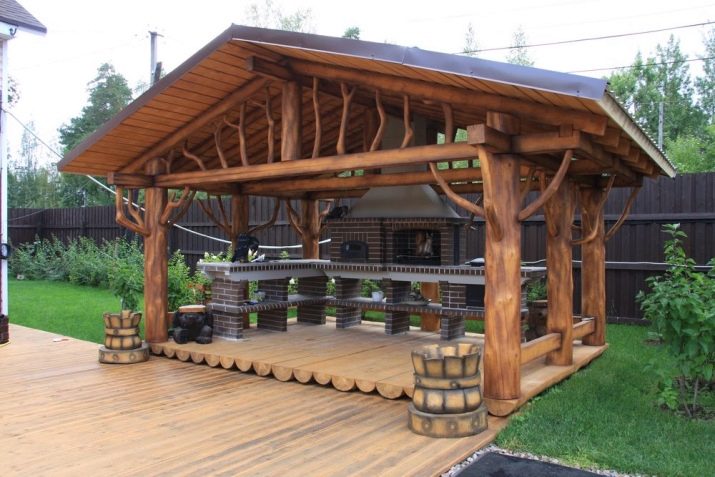
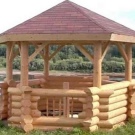

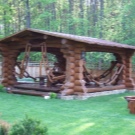

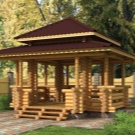
Arbors are made from various materials. It can be laconic metal painted in your favorite color, artistic forging with graceful weaves and ornaments, or natural logs. The latter options are used very often, since log structures look especially cozy and warm, and this is exactly what modern consumers are looking for in a gazebo.


Natural logs are ideal for making a beautiful and most comfortable gazebo. The surrounding landscapes always look especially harmonious when combined with such structures.

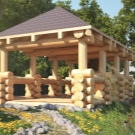
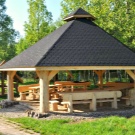
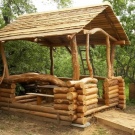
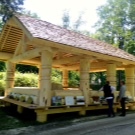
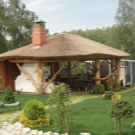
A distinctive characteristic of log gazebos is that they can be decorated with carved elements. Such additions can make the resulting design truly fabulous and unique. If you do not like intricate design techniques, then the logs can be left without additional processing, and the gazebo will still look great.
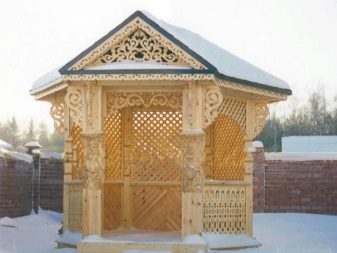
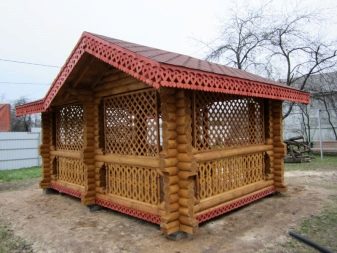
A structure made of natural material can be given any shape. The gazebo can be simple and rounded, or it can be a small rhombus or square with obtuse corners. In this matter, everything depends solely on the preferences of the owners of the site.
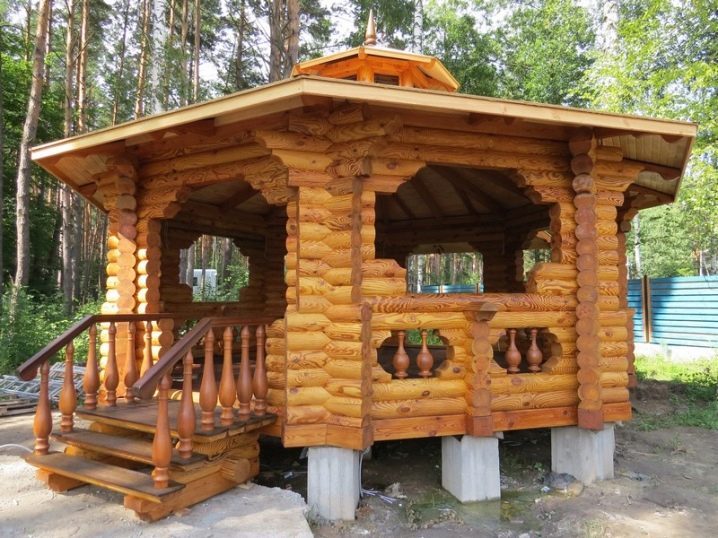
Pergolas built from natural logs have their own strengths and weaknesses. You should carefully read them if you want to place such a structure on your site.
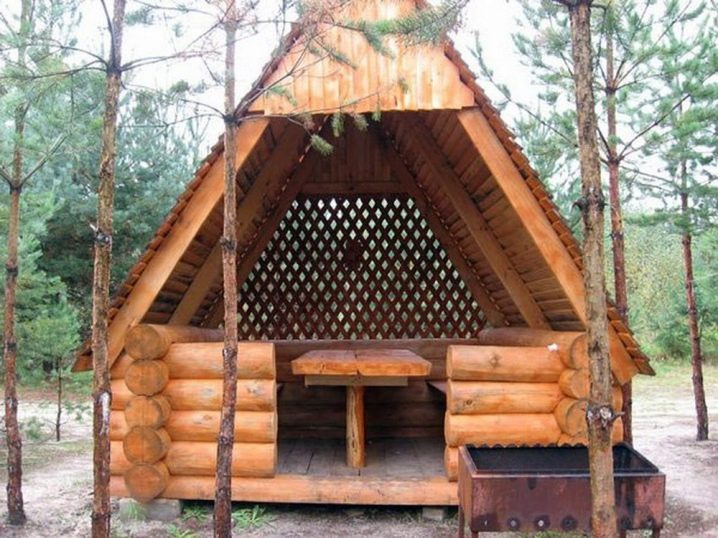
Let's start with the good - consider the pluses of log structures.
- The beautiful design of the wooden arbors should be noted. With all their appearance, such designs demonstrate coziness and unity with nature. With the help of a well-made structure, you can transform the site and make it more hospitable.
- A log gazebo will fit perfectly into almost any landscape design.
- Wooden gazebos are environmentally friendly. Being surrounded by such a structure, you will not harm your health, since wood is a safe raw material, which does not contain hazardous chemical compounds.

- Log products "breathe" and maintain adequate ventilation, so harmful bacteria do not grow on their surfaces, leading to the formation of fungi and mold.
- Many consumers note that log gazebos have sound-absorbing characteristics.
- It won't take a lot of free time to build such a gazebo. The construction itself is not too complicated, so a home craftsman can easily handle it.Do not be afraid to work with wood - you can handle it yourself quite easily.
- As for the finishing of log gazebos, the costs for them in this case are minimal. You only need to stock up on antiseptic smears and natural mixtures that will protect the tree from adverse external factors.
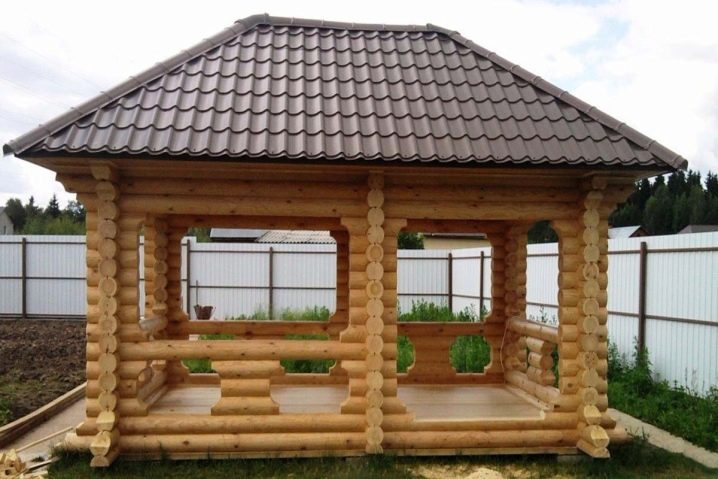
There are plenty of pluses for wooden arbors. That is why they are so often chosen for the arrangement of land plots. However, such structures also have their drawbacks.
- It was mentioned above that for a wooden gazebo you need to stock up on special antiseptics and protective compounds. Many people attribute this nuance to the disadvantages of log structures, since they need regular care, which cannot be neglected. Additional impregnations are required to prevent the wood from rotting, cracking and becoming a home for parasites.
- Even with high-quality wood processing, it will still remain a fire hazardous material. It is not recommended to make fires or put up barbecues near the wooden gazebo, so as not to put yourself in danger once again.
- Wood is not very difficult to grind, but chopping it with an ax is not an easy task. This process will take a lot of effort.
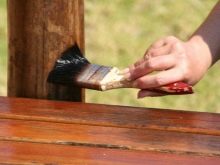

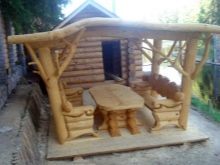
Choice of materials
The gazebo can be made from different types of logs. Let's consider them in more detail and get acquainted with their features.
Of rounded
Rounded bars are made on special woodworking machines. In the process of cylindering, the barrels acquire a standard diameter. Thanks to this, the logs are the same and do not differ from each other.
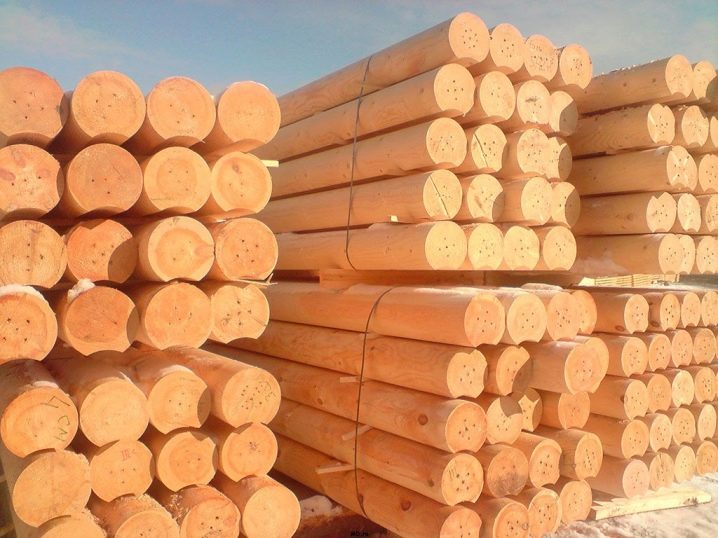
Gazebos are very often built from round rounded logs. This is due not only to the attractive appearance of such structures, but also to their durability, increased air exchange and low thermal conductivity.
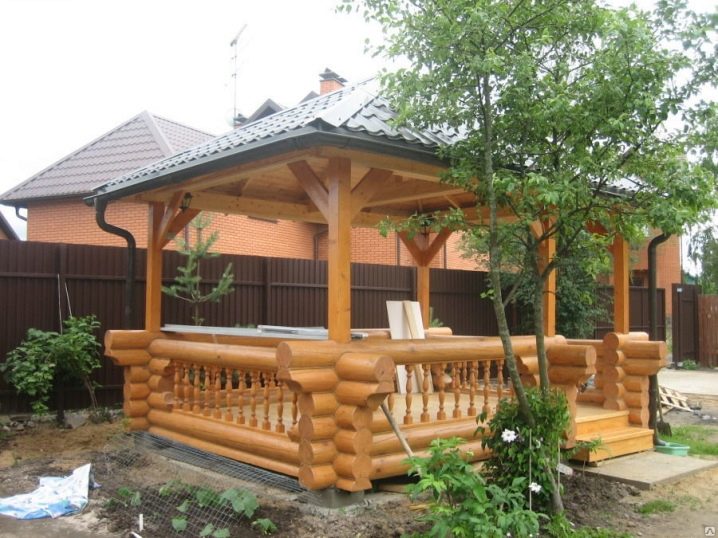
For the construction of such structures, you need to competently prepare a reliable foundation. This is due to the fact that large rounded logs are heavy and require an appropriate base. The layout of the logs themselves begins with the first crown, after which you can proceed directly to the installation of the walls of the gazebo. These works are carried out quite simply and for this you do not need to possess cunning skills.
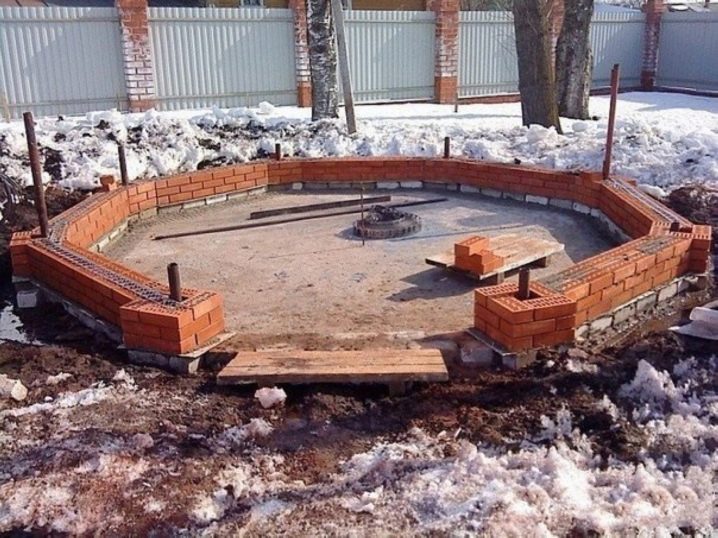
From calibrated
Calibrated logs are often used to build gazebos. This building material has its pros and cons.
For such structures, rounded logs are mechanically processed along their entire length. This is necessary to obtain a certain diameter of the parts. It is very easy to work with such elements, since they have the same dimensions.
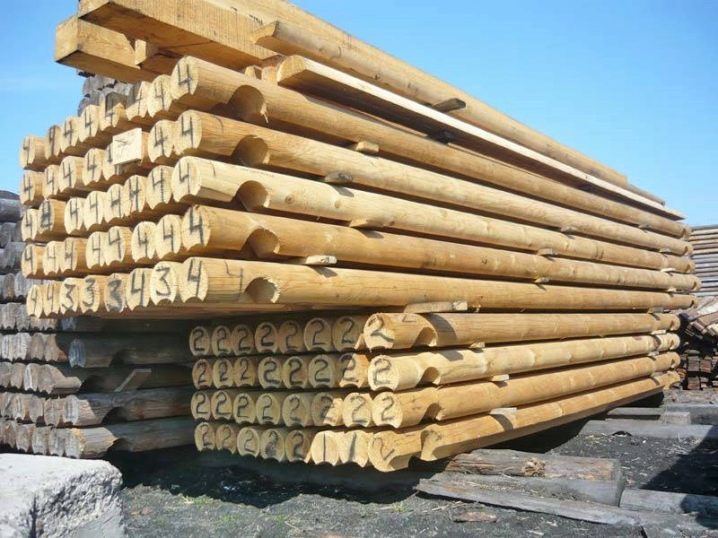
For the preparation of high-quality calibrated timber, the following are ideal:
- soft pine;
- dense spruce;
- oak;
- Linden;
- aspen.



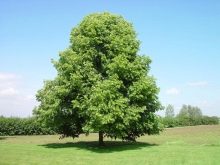
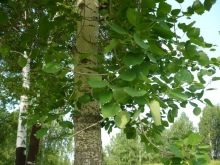
The calibrated timber has a perfectly smooth surface and precisely measured dimensions. Thanks to such characteristics, not only compact gazebos, but also entire private houses are easily built from this material.
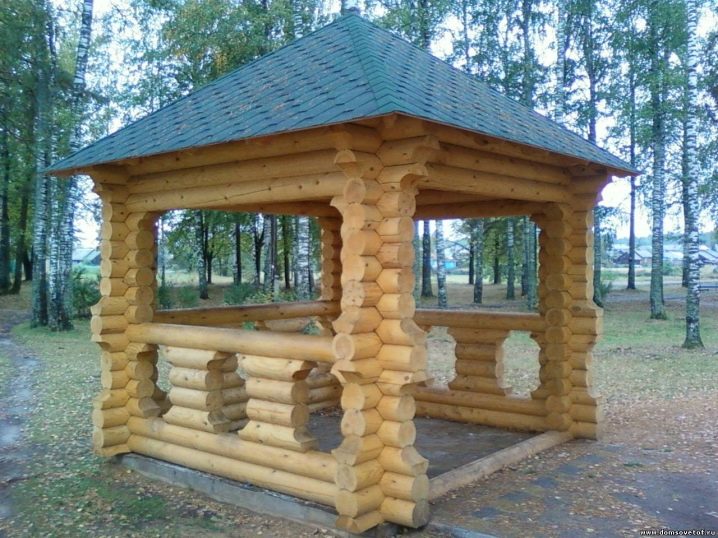
A calibrated bar has many positive qualities.
- As a result of competent processing, high-quality calibrated lumber is obtained, which can be immediately used for the construction of a gazebo. First, a special technique cuts the material, and then prepares the openings for joints and joints, if necessary.
- Structures made of calibrated timber look so natural and attractive that most often they do not need finishing, either inside or outside.
- Calibrated timber is often supplemented with a prepared profile, which protects the natural material from moisture penetration. Thus, good protection of the logs from rotting and subsequent destruction is provided.
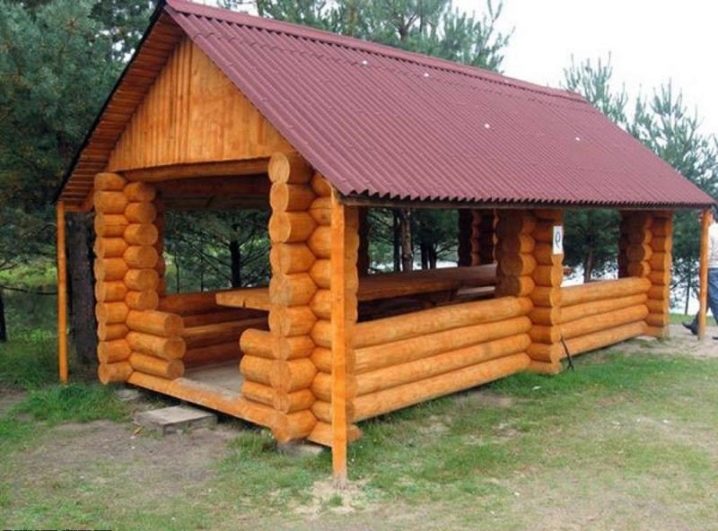
- Such building materials are distinguished by low thermal conductivity. In gazebos made of calibrated timber it will not be too cold even in the winter season.
- Structures made of such logs are lightweight, which distinguishes them from heavy cylindrical versions. Thanks to this fact, the owners will be able to save money on pouring a solid foundation.
- It will not take much time and effort to build an attractive gazebo from such raw materials.
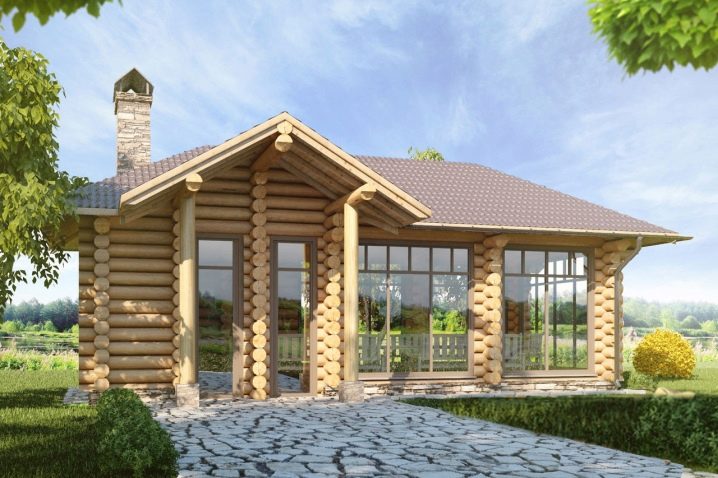
Chopped
Chopped logs are also often used for the construction of gazebos. Such designs also do not require finishing, as they look very neat and natural.
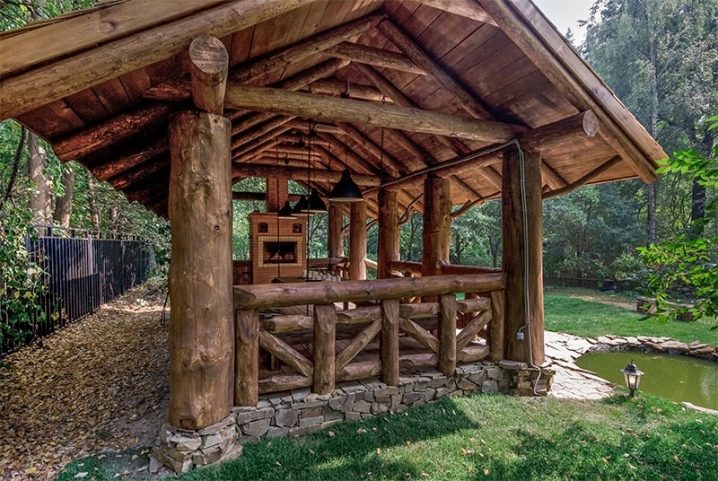
We should also highlight the materials for manual felling. According to experts, the best time for felling is winter. It is necessary to choose the right tree trunks - they should be approximately the same size and length. Immediately after felling, the bark is removed from the materials and a lock is manually prepared, which is necessary for a high-quality assembly of the log house.
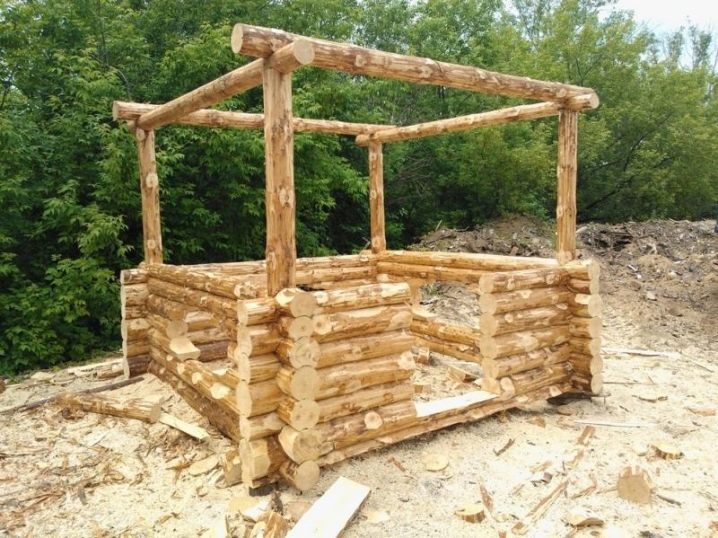
Chopped arbors are not only one-, but also two-story. Such structures look much more interesting, and also provide a sufficient usable area. Many owners install a comfortable hammock or a full-fledged frame structure between the racks of the second floor. It is especially pleasant to rest in such conditions.
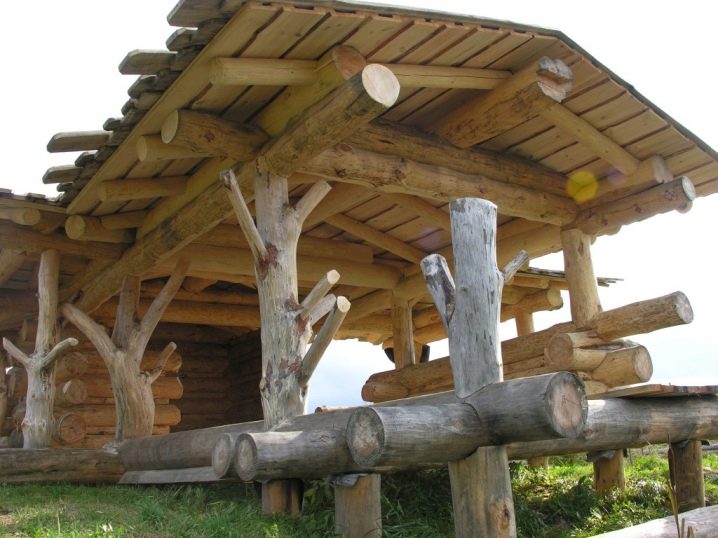
Of course, very attractive small-sized gazebos are also obtained from chopped logs. The main thing that distinguishes such structures is the most natural appearance that will perfectly fit into almost any landscape composition.
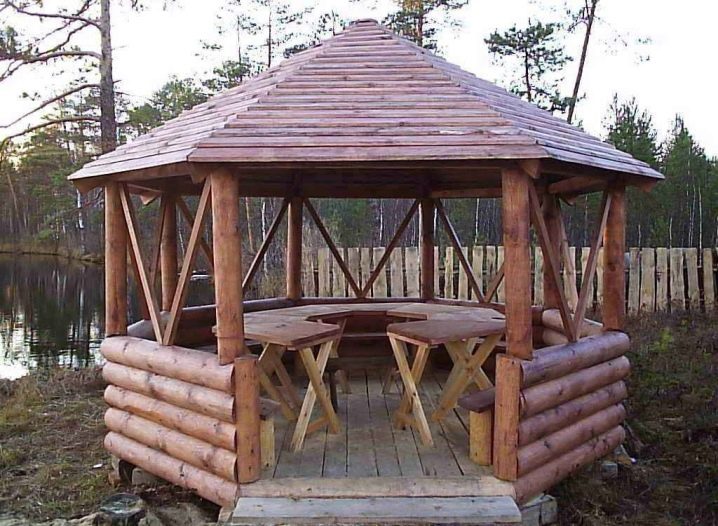
Types of structures
Gazebos can have a variety of shapes, so it will be possible to build a suitable structure for a site of any area. For example, for a compact territory, a small wooden house with benches, which has a square shape and dimensions of 3x3 m, would be an ideal solution. Such buildings can be supplemented with two- or four-pitched roofs.

Some owners of small plots use another interesting technique - they arrange the gazebo so that it adjoins the walls of the house and complement it with a barbecue. Such solutions look no less attractive.
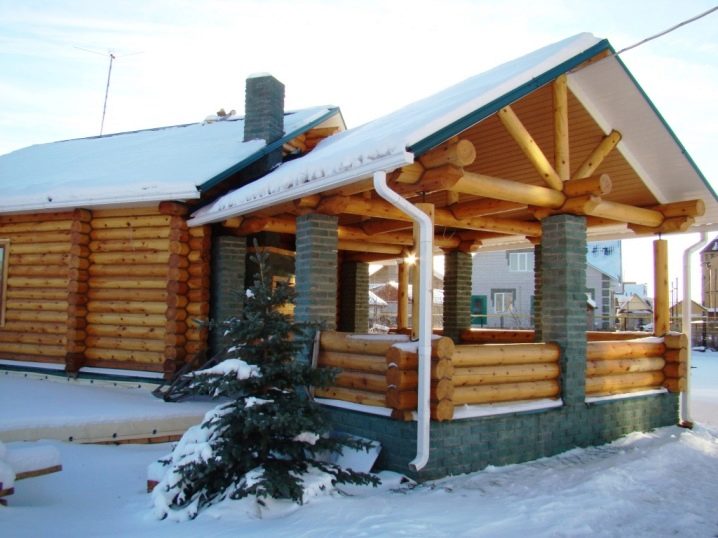
Square structures are often decorated with various decorative elements, for example, lattices or carvings. If you want such an angular building to look more expressive, then you can use a combination of light and dark logs during construction.
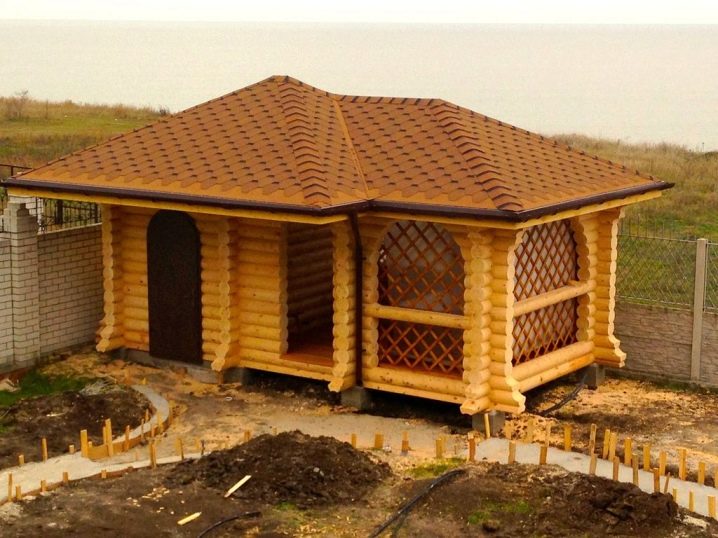
Beautiful rectangular gazebos are very popular. The dimensions of such structures are most often 3x6 m or 3x4 m.As you can see, rectangular options are larger than square ones, so they are not recommended to be installed in conditions of too limited space. Such structures are also decorated with various decorative elements and refer to a combination of different logs.
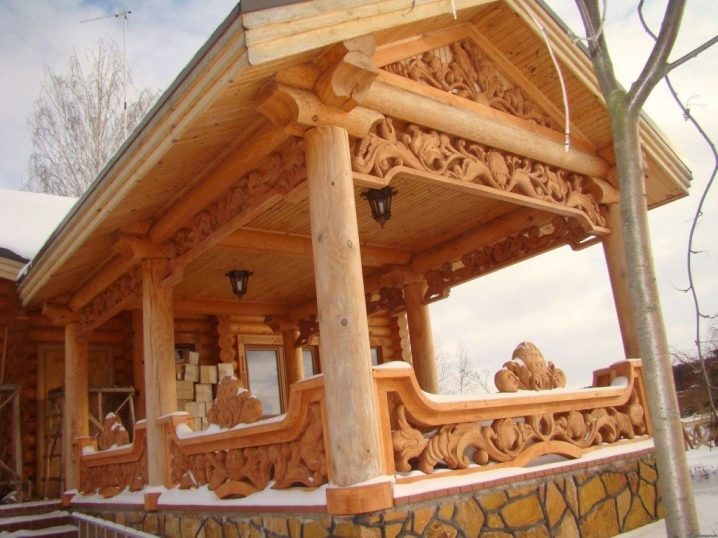
Also, on the plots, spectacular hexagonal and octagonal wooden arbors are often found. As a rule, these structures are quite compact due to their architectural form. Their dimensions are slightly smaller than those of square products, so such structures can be safely located even in a small area.
Despite their small size, gazebos with several edges remain roomy.
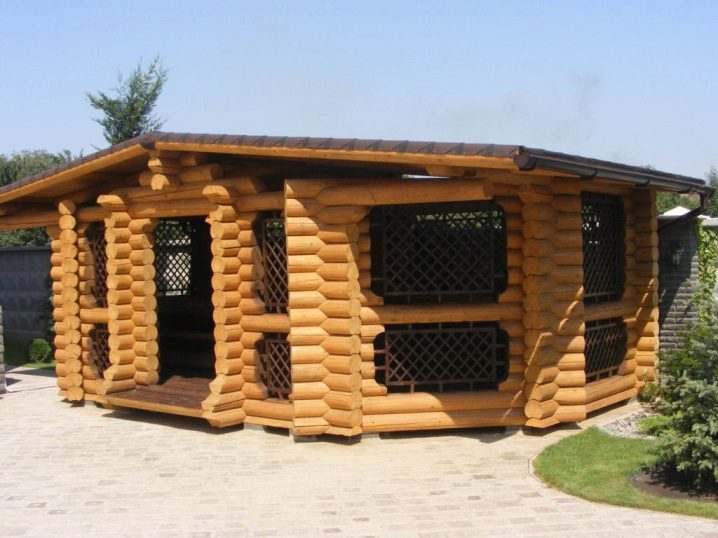
Today, designs with bizarre shapes are in vogue. Such gazebos are most often approached by creative people who want to deviate from the usual standards. These structures can resemble a large carriage, a forest mushroom with a large roof hat, an inverted cone, or a trapezoid. With the help of such gazebos, you can refresh the site and make it more original, but their construction cannot be called simple and quick. In addition, such buildings cost the owners much more, and they require more free space.
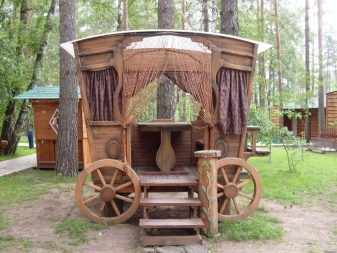
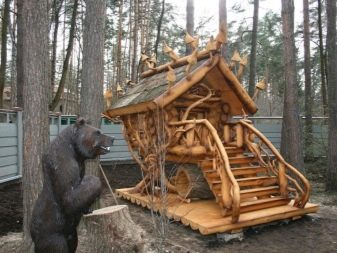
If your site is very small, don't be upset. You can place a mini-gazebo on it, consisting of a minimum number of parts - a canopy and supports. In such a design, several people can also comfortably fit.
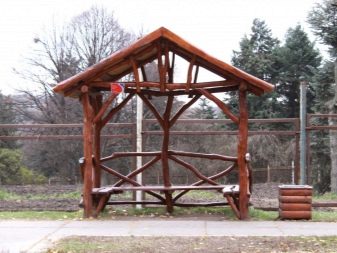

Log gazebos can have not only different shapes, but also different designs.
- Open. These simple gazebos have no windows or walls. They contain only fences of different heights and degrees of openness. Such structures are summer wooden pavilions, supplemented by awnings. Free air circulation is characteristic for open structures.

- Closed. Such gazebos are a miniature house with full-fledged walls, windows and doors. You can use such a building as an outhouse for receiving guests. Some owners equip such spaces with a comfortable summer kitchen.
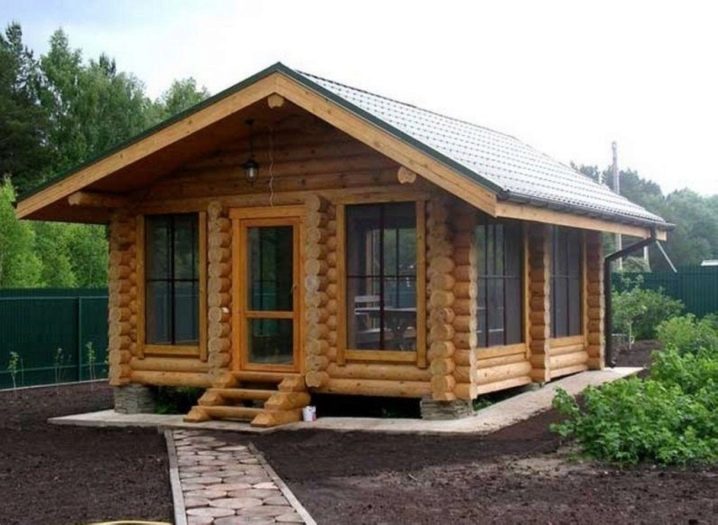
- Semi-closed. Such structures consist of a couple of walls and a canopy. Such structures are exclusively seasonal, although rain and wind do not penetrate them due to the overlap.
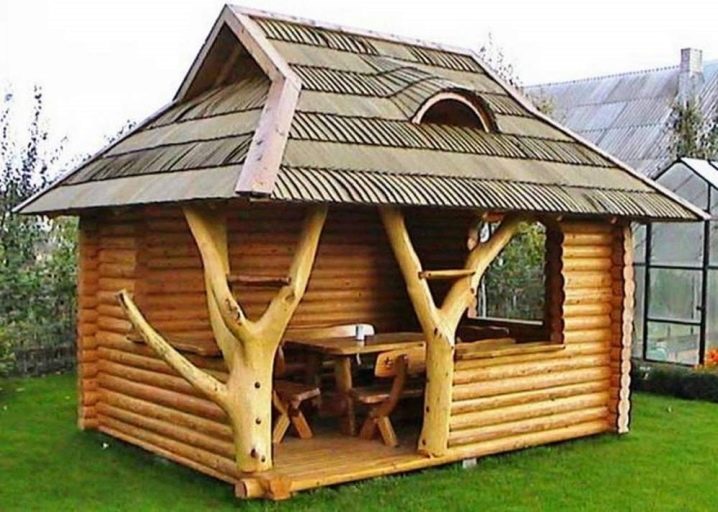
How to do it yourself?
It is quite possible to build a log gazebo yourself.
To carry out installation work, you will need:
- waterproofing;
- concrete mixer;
- hacksaw, nails, hammer, ax;
- reinforcement mesh;
- bayonet shovel;


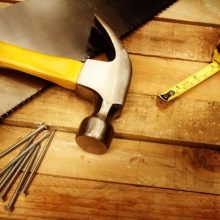

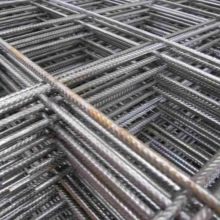
- special rope for marking;
- mounting level;
- cement;
- crushed stone;
- seeded sand;
- materials for formwork.
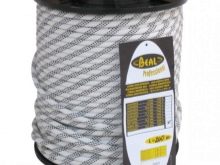





If you have stocked up with all the necessary tools and materials, you can proceed directly to the construction of a log gazebo.
Let's consider this process step by step:
- First you need to prepare a place for installing the gazebo. To do this, it is necessary to clear the required site and remove absolutely all debris from it, as well as weeds that can interfere with the construction process.
- After that, the site must be leveled and accurate markings made.

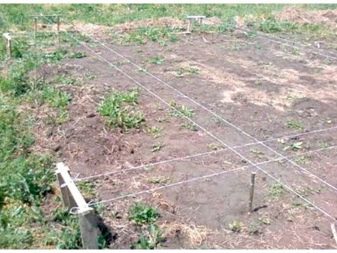
- Then you can proceed to making the foundation. The choice of the correct design largely depends on the weight of the future design. There are three types of foundations: tape, columnar, tiled.
- To equip the strip foundation, it is necessary to dig a trench based on the marked perimeter. As a rule, its width is 25-30 cm, and the depression depends on the depth of soil freezing.
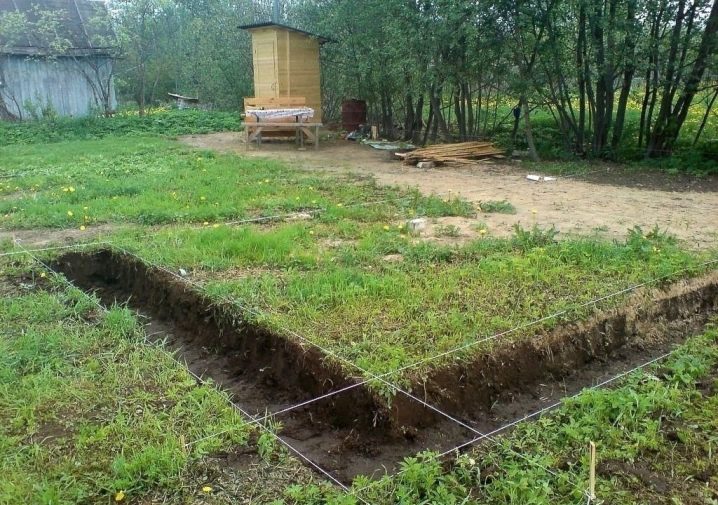
- After that, the formwork is placed, and a sand-crushed stone pillow is poured into the trench.
- When the backfill is well compacted, you can proceed directly to concreting and laying waterproofing.
- The columnar foundation is prepared quickly. In the corners of the future structure, you need to dig holes, and then mount the formwork.
- Next, the pits need to be filled with brick fighting or crushed stone, and then concrete is poured. When the latter is completely dry, roofing material can be laid for waterproofing.
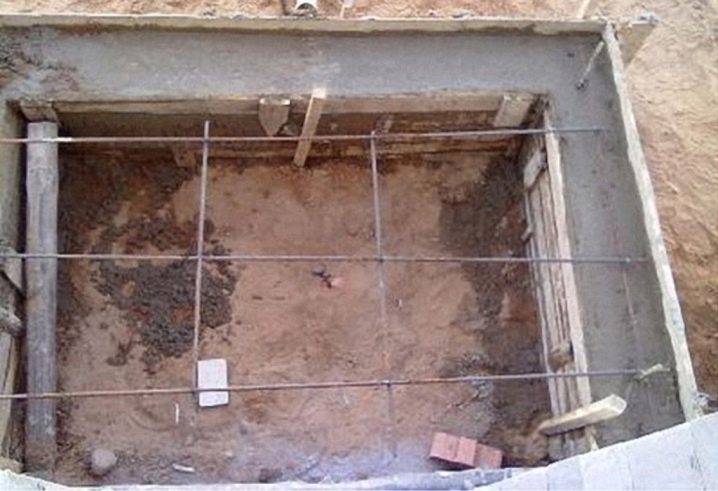
- It is recommended to use a tiled foundation if you plan to put an open gazebo. To prepare it, it is necessary to remove the upper layer of soil to a depth of 4 m. Then, crushed stone should be poured into the resulting pit, reinforcement mesh should be laid and everything should be poured with concrete.
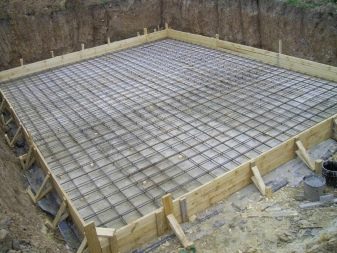
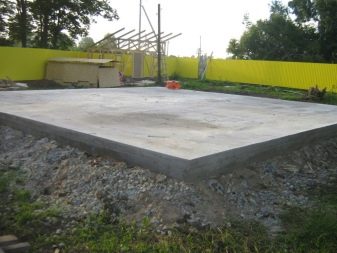
- After preparing the foundation, you can proceed to the construction of the walls of the gazebo. As a rule, they are mounted in a special way - "in the paw". With this method, laying the floors takes a minimum of time and effort, but for this you need to have certain skills so that the logs lie flat and neatly.
- For the construction of walls, it is necessary to mark the logs at the ends.
- You also need to make the correct basting of the tree, which has the smallest diameter of the upper part.
- Next, you need to make a competent marking on the first laid log.
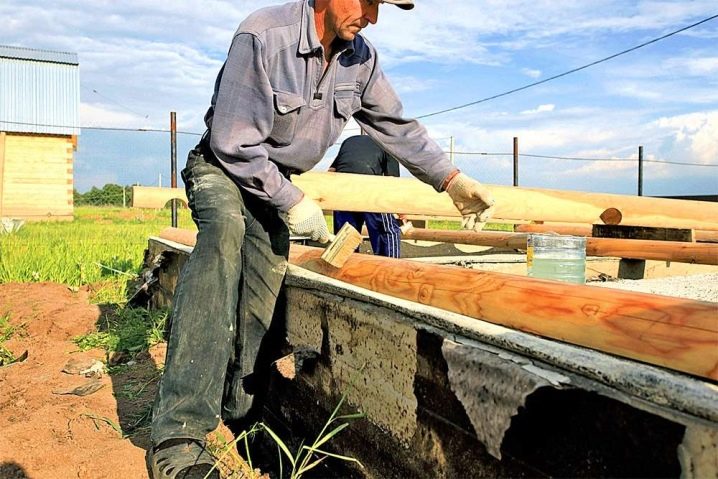
- The logs need to be processed with four edges. One of them should go through the entire workpiece and go out.
- To cut out the grooves, you need to make a cut-in with a visual division of the square into 8 separate elements.
- Logs should be stacked exclusively horizontally. Always check the flatness of the surfaces while working. For this, you should use the building level.
- The vertical connection of the elements must be done using pins.
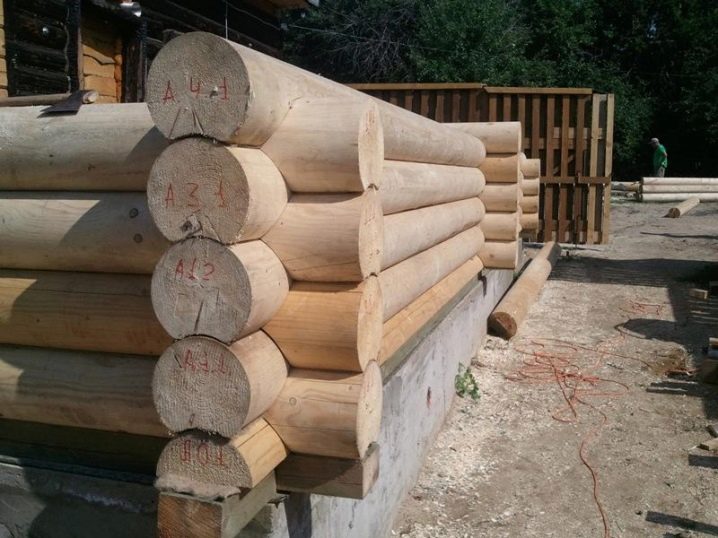
- A year (approximately) after the completion of the construction of the walls, complete shrinkage of the entire structure should occur and caulking can be performed.
- After that, you should proceed to the installation of the roof. To do this, you must use a rafter base. The parts are connected to each other using special dowels, which are wooden pegs.
- Then, along the rafters, you need to make a crate and lay the roofing material.


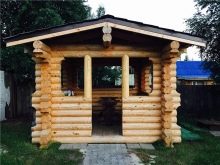
The final stage in the construction of a wooden gazebo is its finishing and processing. First of all, you should pay attention to the condition of the floor in the house. It must be protected from dampness and moisture, and if it also consists of wood, then it must be covered with varnish or wear-resistant paint (you can use the front one).

Examples of finished buildings
A log gazebo is a good solution for arranging a site. Such designs look great both in small and spacious areas.
The gazebo can have a very interesting and original design. For example, in it you can cut out improvised windows of non-standard shapes and leave them unglazed. Such elements can be through and take up a little less than half of the floor area. Especially attractive views will open from such gazebos.
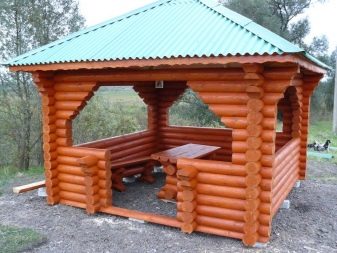
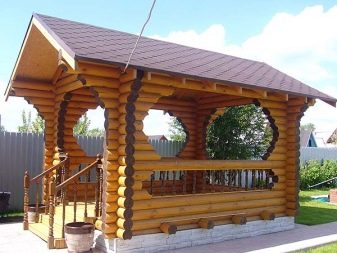

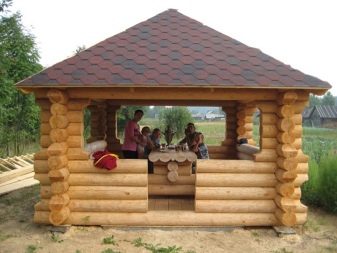
Wooden gazebos acquire a more complete and harmonious look when they are complemented by popular details such as lattices. These items can also be made from wood. They look particularly attractive when combined with a tiled roof.

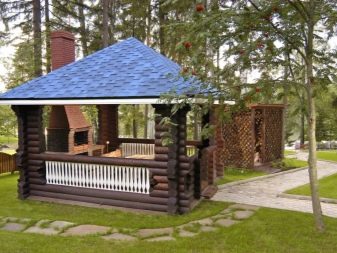
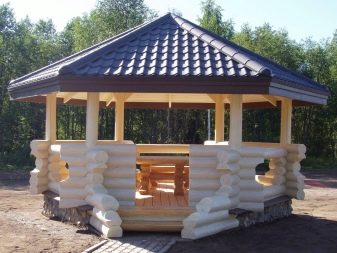

In a semi-open light gazebo with a high conical chocolate-colored roof, you can organize a compact summer kitchen with a large brick oven equipped with a fireplace. Opposite such a unit, you should put a small round table and a couple of chairs. Such structures look very welcoming and expensive, despite the semi-open structure.
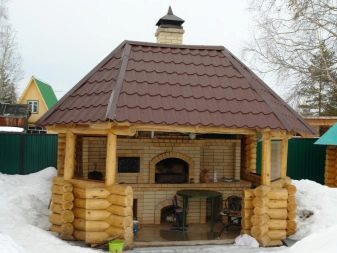

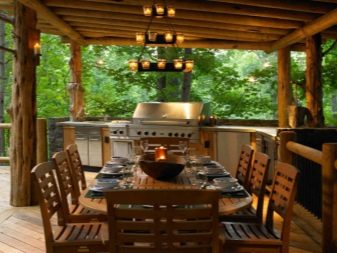
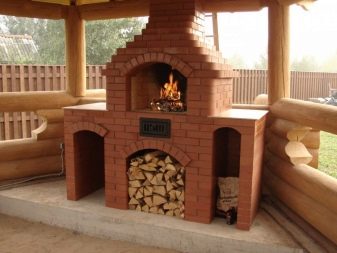
You can watch a master class on making a garden gazebo in the next video.





























































The comment was sent successfully.